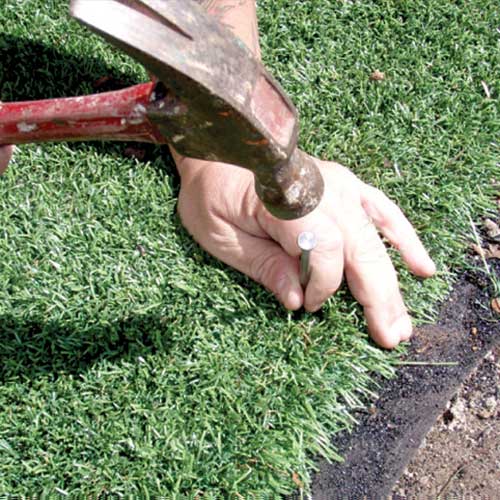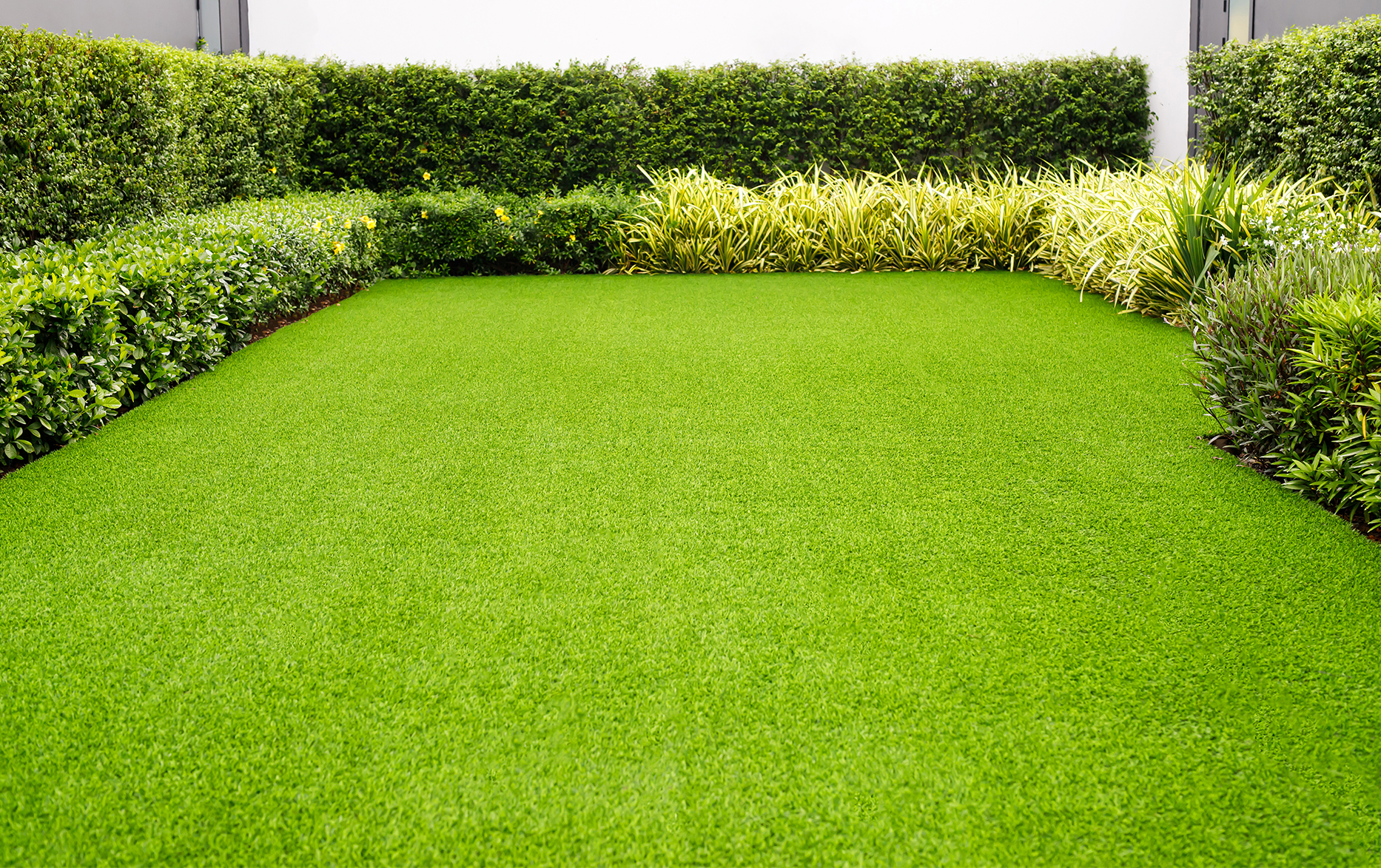Explore the Environmental Conveniences of Opting for Synthetic Grass Solutions
The fostering of fabricated lawn remedies offers an engaging chance to attend to pressing environmental challenges. By significantly reducing water use and decreasing the application of harmful chemicals, these alternatives not only advertise lasting landscape design however likewise safeguard local communities. The reduced carbon footprint associated with lowered maintenance activities adds to a more lasting technique to land administration. The implications of these advantages expand beyond plain conservation initiatives, raising inquiries about their long-lasting influence on habitat conservation and overall environmental equilibrium. Checking out these measurements reveals a complicated interaction worth taking into consideration.
Water Conservation Conveniences
One of the most substantial advantages of synthetic turf is its capability to preserve water. In contrast, artificial grass does not need watering, considerably decreasing the total need for water sources.
By eliminating the requirement for regular watering, man-made turf adds to lasting landscape practices and assists mitigate the environmental effect of excessive water consumption. In addition, the conservation of water prolongs to the decrease of drainage, which can result in dirt disintegration and river pollution.
In addition, the installation of synthetic grass enables home owners and municipalities to assign water sources extra successfully, concentrating on essential uses such as drinking water and agriculture. The shift towards man-made grass not only promotes accountable water usage yet also lines up with more comprehensive ecological objectives intended at protecting natural deposits.
As communities increasingly prioritize sustainability, the water conservation benefits of synthetic grass present a compelling instance for its fostering in household and business landscaping projects.
Decreased Chemical Usage
The transition to fabricated lawn dramatically reduces the reliance on chemical treatments generally made use of in natural grass maintenance. Typical lawn management usually includes the application of fertilizers, herbicides, and pesticides to advertise development and control parasites. These chemicals can posture threats to human health, neighborhood wild animals, and the atmosphere, adding to soil and water contamination.
In comparison, synthetic grass gets rid of the need for these harmful substances. Once installed, it calls for minimal upkeep, mainly including routine cleaning and seldom infill replenishment. This decrease in chemical use not only profits the prompt environment but likewise adds to more comprehensive environmental security. By reducing the launch of artificial compounds into the ecological community, synthetic grass advertises healthier soil and water systems.
Additionally, the lack of chemical drainage linked with synthetic grass setups assists secure regional rivers from contamination, sustaining water life and keeping biodiversity. Arizona artificial turf. As areas increasingly focus on sustainable techniques, choosing synthetic grass presents a sensible solution that straightens with environmental conservation goals. Via this change, residential property proprietors can take pleasure in rich eco-friendly spaces without compromising eco-friendly health and wellness, leading the way for a more lasting future
Lower Carbon Footprint

In addition, the installation of fabricated turf can cause substantial water preservation. All-natural lawns need substantial amounts of water for irrigation, which not just contributes to the carbon footprint related to water removal and treatment however additionally strains regional water sources. In comparison, synthetic grass requires marginal maintenance, needing no watering, consequently significantly decreasing water use and its linked power costs.
Additionally, the durability of synthetic grass contributes to its decreased carbon influence. With a life-span of approximately 15 years or even more, the demand for frequent replacements is diminished, resulting in less waste and lower power consumption in manufacturing and disposing of traditional grass alternatives. Overall, synthetic turf presents a sustainable alternative for eco aware landscape design.
Environment Preservation
Habitat preservation is a vital consideration in the debate over landscaping choices, specifically when contrasting synthetic grass to natural yard. try here All-natural lawn lawns commonly need substantial maintenance, including making use of plant foods, chemicals, and herbicides, which can negatively impact neighborhood ecosystems. These chemicals can seep into the dirt and rivers, hurting indigenous plants and fauna and interfering with regional environments.
In comparison, synthetic lawn offers a chance to minimize the environmental footprint of landscaping. By choosing synthetic yard, homeowners can lessen the disruption of all-natural environments connected with traditional yard treatment practices. Synthetic grass gets rid of the demand for dangerous chemicals, thereby securing nearby wildlife and keeping the honesty of surrounding ecological communities. The setup of man-made lawn can lead to the conversion of previous grass areas into more biodiverse landscapes, such as pollinator gardens or native plant areas, which can support local wildlife.
Ultimately, the change to synthetic grass not just conserves water and reduces upkeep efforts however likewise fosters a more unified partnership in between human activities and the natural setting, advertising habitat preservation in the procedure.
Long-Term Sustainability
Long-lasting sustainability is a crucial variable in reviewing the advantages of synthetic lawn over typical turf lawns. Among the most substantial advantages of synthetic grass is its durability; it can last approximately 15-20 years with very little maintenance, whereas all-natural turf calls for regular reseeding and replacement. This durability reduces the demand for continuous sources, such as water, fertilizers, and chemicals, which are vital for maintaining a healthy and balanced grass lawn.
In addition, synthetic grass adds to a decrease in carbon emissions related to lawn care tools. Typical yards typically call for gas-powered mowers, leaners, and blowers, every one of which add to air contamination. Arizona artificial turf. On the other hand, man-made lawn eliminates the requirement for such tools, promoting a cleaner atmosphere
In addition, the production of synthetic grass significantly utilizes recycled materials, improving its sustainability account. As producers embrace eco-friendly methods, the environmental impact of fabricated lawn remains to diminish.

Conclusion
The fostering of fabricated turf services provides considerable ecological benefits, including substantial water conservation, minimized dependence on harmful chemicals, and a reduced carbon impact. Synthetic turf help Click Here in maintaining all-natural habitats by reducing land disturbance and advertising lasting sustainability with the use of durable products. Jointly, these aspects highlight the potential of synthetic grass helpful resources to add positively to environmental wellness and use a feasible alternative to traditional landscape design methods in an increasingly resource-conscious globe.
In comparison, synthetic turf does not require watering, substantially decreasing the overall need for water resources. By decreasing the launch of synthetic substances into the ecosystem, fabricated grass advertises healthier dirt and water systems.
Additionally, the installment of man-made turf can result in significant water conservation. In comparison, artificial grass requires minimal upkeep, needing no watering, thereby substantially reducing water use and its associated energy prices.
